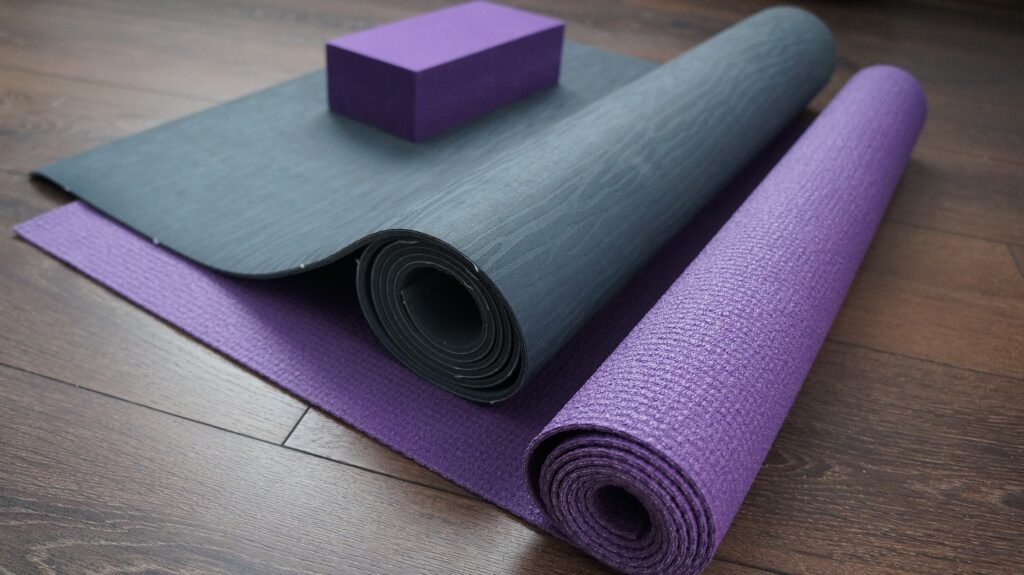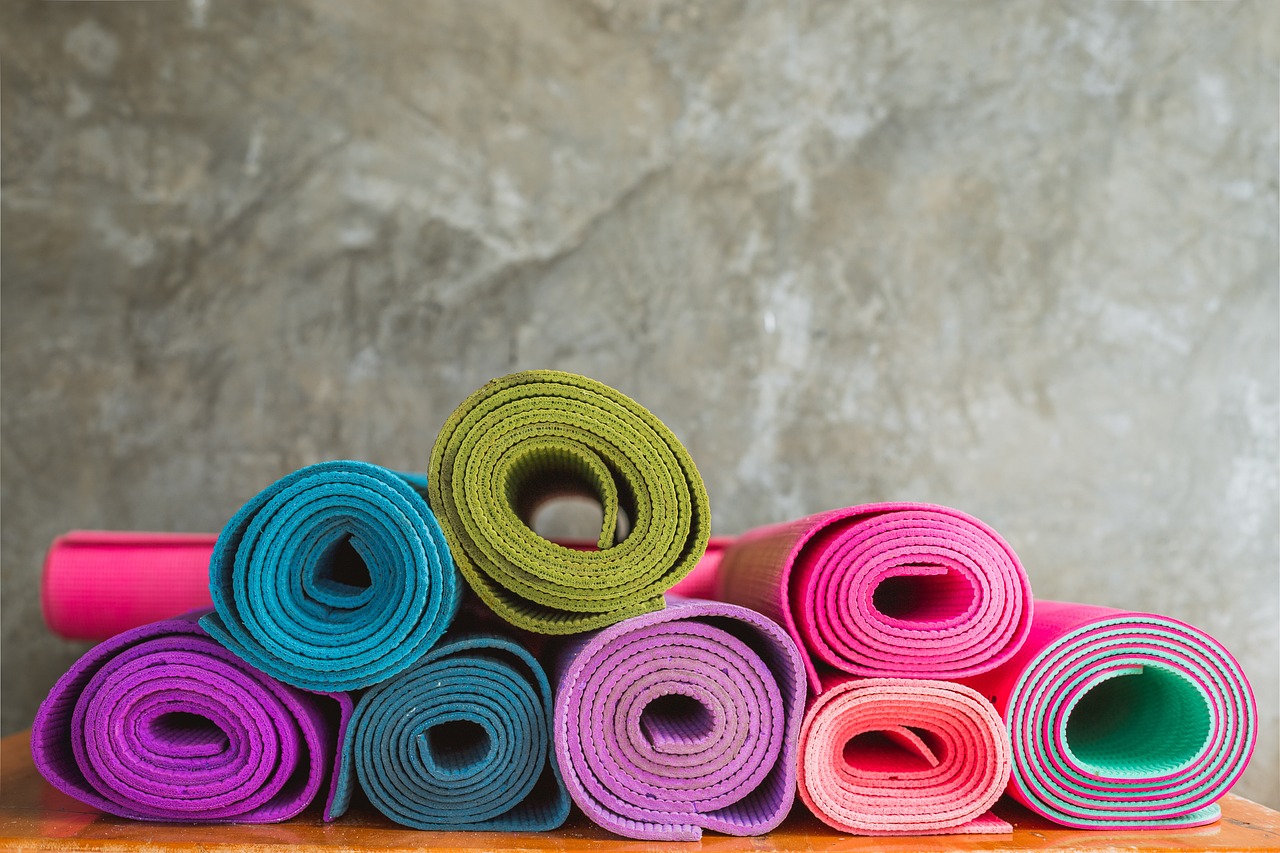When starting yoga the main accessory you will need is a Yoga mat. For your first lessons you will probably use one of the mats the studio will provide but when you start getting into it you will need your own yoga mat that will provide a comfortable and supportive surface for your yoga practice. It is essential to have a good quality yoga mat since it will help you prevent injuries and it will offer you a nice experience. In this blog post, Ι will try to include all the factors that you need to take into consideration when choosing a yoga mat as well as what other accessories may be helpful for your new hobby.
Factors to consider when choosing a yoga mat:
1. Material
Yoga mats come in various materials such as PVC, natural rubber, cork, and jute. PVC mats are the most common and the cheaper options, but they may not be the most environmentally friendly option. Natural rubber mats are eco-friendly and provide excellent traction, but they can be heavy and may not be suitable for people with latex allergies. Cork and jute mats are also eco-friendly, but they may not provide as much cushioning as the other materials mentioned. So, as you understand the choice of material is a bit tricky.
2. Thickness and Density
The thickness and density of the yoga mat are also important factors to consider. Mats that are too thin can be uncomfortable, while mats that are too thick can be unstable. The ideal thickness for a yoga mat is between 4mm to 8mm.

3. Size and Shape
The size and shape of the yoga mat are also important factors to consider. The standard size for a yoga mat is 68 inches long and 24 inches wide(180 long to 60 cm wide), but some mats are longer or wider. If you’re taller or have a wider stance, consider a larger mat. There are also yoga mats with rounded corners or a unique shapes like cycles. Chose according to your preferences and needs however take into account the room and the space you will have at your disposal when practicing.
4. Texture and Traction
The texture and traction of the yoga mat can have an effect on your stability during your workout. A textured mat can provide more grip and prevent you from slipping, especially during a sweaty practice. A smooth mat may be more comfortable, but it can be more challenging to maintain proper alignment. It is obvious that a mat with a textured surface is in most cases preferable.
Additional Accessories
- Yoga Mat Bag: If you are not working out in your home, then you will need a yoga mat bag to carry your new your yoga mat as well as other accessories to and from your practice.
- Yoga Blocks: Blocks are used to support your body during difficult poses, deepen your stretches, or provide stability during balance poses. It applies to all levels.
- Yoga Straps: Yoga straps help you deepen your stretches and improve your flexibility. Straps can also be used to support your body during poses where you need to reach your feet or ankles.
- Yoga Towel: Yoga towels are essential if you’re someone who tends to sweat during your practice. A yoga towel can be placed on top of your mat to provide better grip and prevent slipping.
Choosing a good yoga mat and accessories can improve your yoga practice and make it more comfortable and enjoyable. Consider the material, thickness, size, and texture of your mat, and don’t forget to explore additional accessories that can support your practice.
